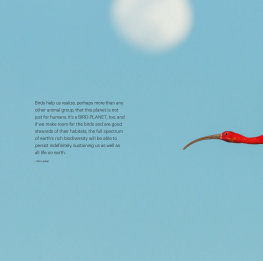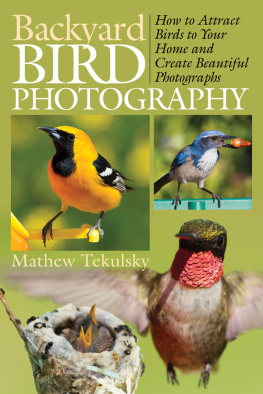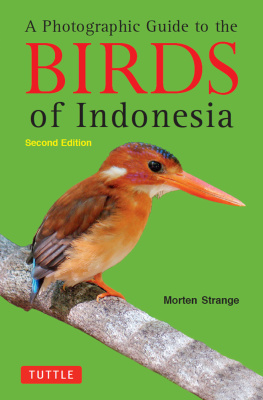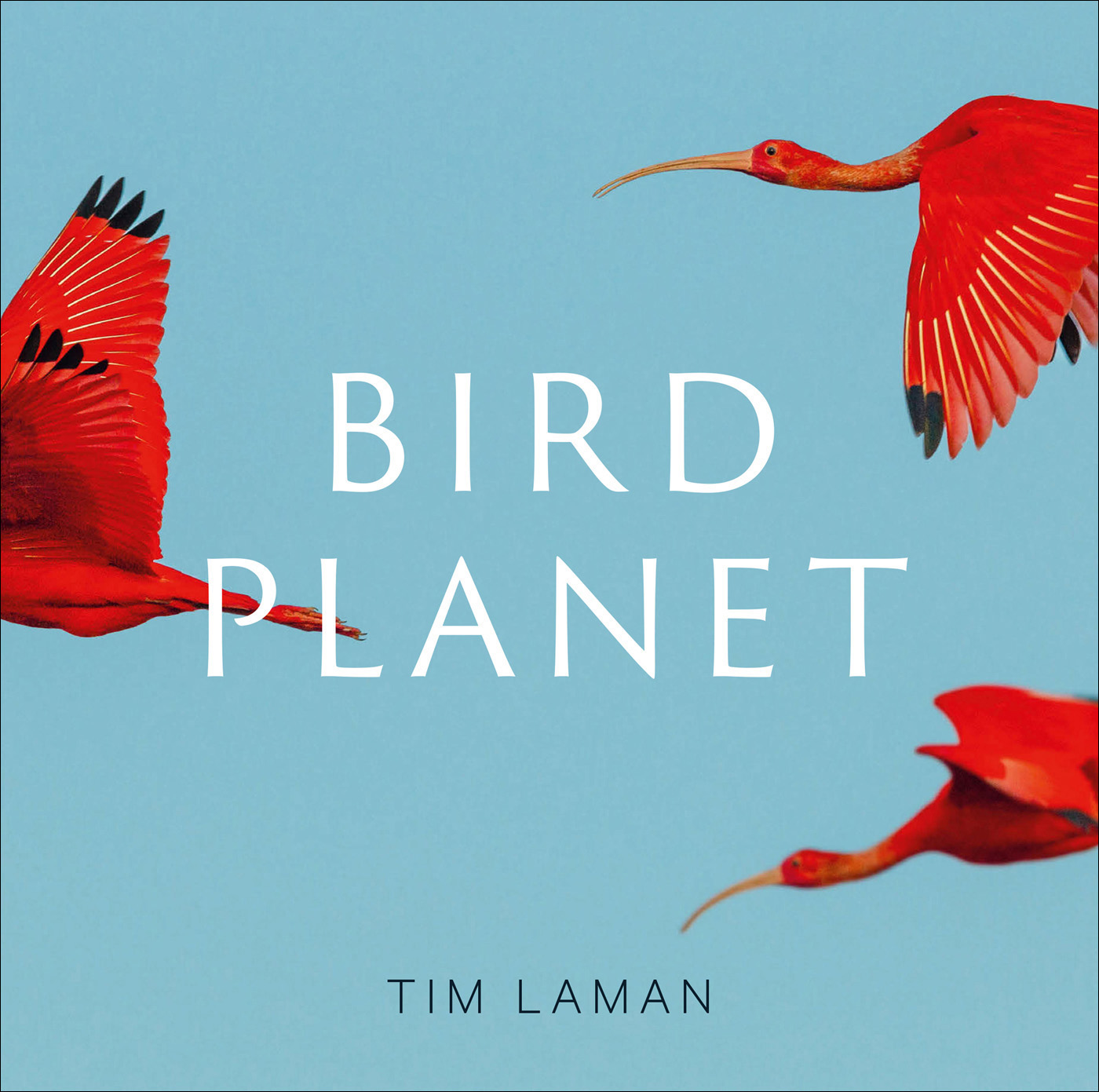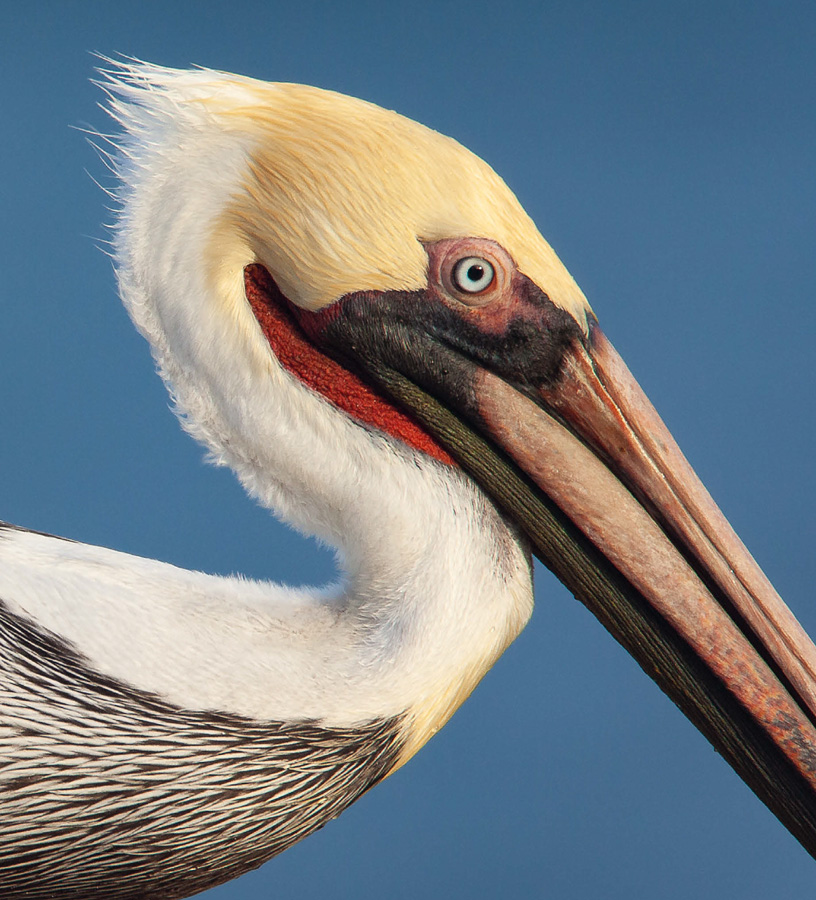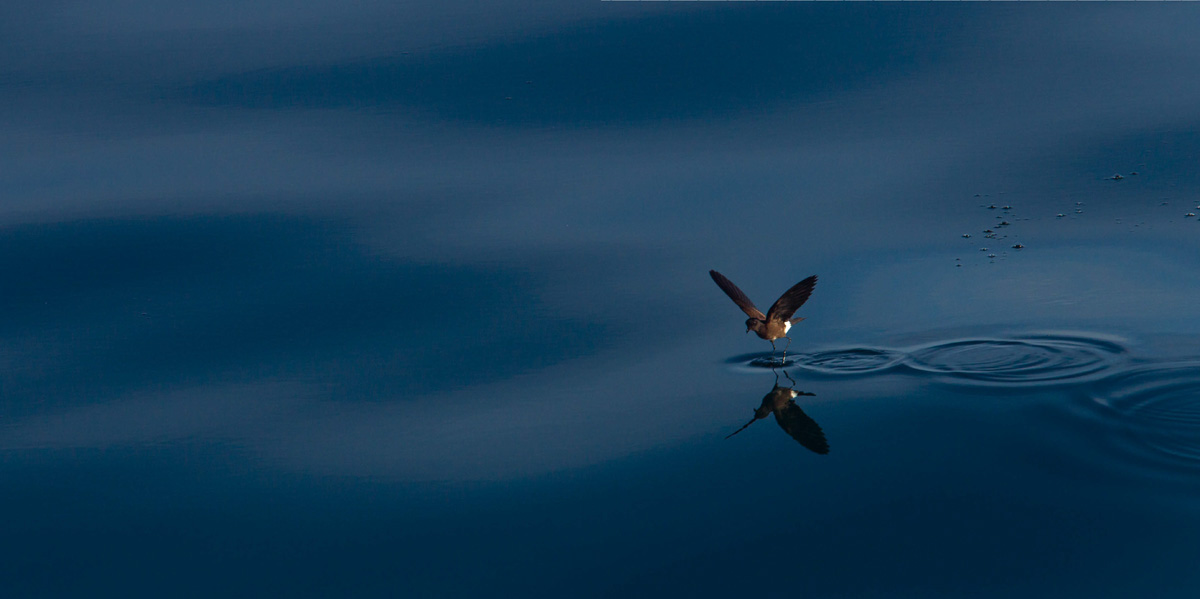A white-vented storm petrel forages for small creatures on the oceans surface on a very calm day in the Galpagos Islands, Ecuador.
Cobalt-winged parakeets gather to feed on minerals at a clay lick near the Napo River, Yasuni National Park, Ecuador.
A male king bird of paradise descends a vine in his display tree, showing off his vibrant colours including red body, blue legs and wire-like central tail feathers terminating in green spiral discs, Oransbari Forest, West Papua, Indonesia.

A greater bird of paradise female assesses two adult males as they perform their inverted display at their treetop display site in the Badigaki Forest on Wokam Island in the Aru Islands group, Indonesia.
Foreword
This remarkable treasure trove of images is testament to two great powers in the natural world. First, without question, birds are the worlds most powerful ambassadors for inspiring humans to love and protect nature. Second, Tim Laman has become birds most accomplished ambassador for revealing their private moments, lively spirits and timeless souls.
In a book featuring a carefully chosen few of his extraordinary masterpieces from around the world, only a visionary naturalist would elect to include a blurry great blue heron amidst a drenching downpour. On second look, this photograph reveals a great photographers intent: focus is expressed by the bird, not the image eyes and behaviour show an individual intent on fish, oblivious to weather. Next, in tight focus, we encounter another eye in action, this one belonging to the heron glimpsed amidst dense foliage.
Tim Laman became a fabled, award-winning photographer not simply by taking spectacular pictures. Given todays high-quality digital cameras and lenses, almost anyone with time and resources can luck into great shots. By contrast, look for Tim Laman hallmarks in every image as you savour this collection: each one testimony to Tims commitment to reveal not just the beauty of the worlds birds, but also the intricacies of what they do.
Laman has spent much of his adult life in remote places all over the world, and he has done so on our behalf. Dearly in love with his planet, Tim is determined that we become as committed as he is to conserving earths precious natural heritage by showing us natures most intimate moments and vulnerable secrets in vivid detail. He has the unique capacity to do so because he is blessed with the eyes of a lifelong naturalist, the knowledge of a PhD scientist, the creativity of an artist, and the dexterity of a nimble craftsman.
It is impossible to describe what Tim Laman puts himself through to provide us with all these beautiful windows into nature. His work is the product of extraordinary study, endless planning, otherworldly patience, physical endurance and world-class skill at tropical tree-climbing! Added to this, is an extraordinary soul whose deep and generous emotional engagement with people earns him trust among communities around the world, who in turn grant him access to their most precious places and secrets.
It has been my privilege to work with Tim ever since he and ornithologist Ed Scholes proposed an outlandishly ambitious dream to photograph and video all thirty-nine species of birds of paradise. We jumped at this unique opportunity at the Cornell Lab of Ornithology, allowing Tim and Ed to pour their hearts (and risk their lives) into the project. Some fruits of their phenomenally successful expeditions grace the pages of this book, including many discoveries that were wholly new to science.
From the prehistoric hoatzins awkward balancing act to the remarkable eyelash adornments of a ground hornbills bizarre, scarlet face; from a foraging godwit silhouetted on a fiery tidal flat to penguins in action amidst so many hues of icy blue; and from tight close-ups of a palm cockatoo to mystical, crane-filled Japanese landscapes, indeed, from every wild corner of our world, Lamans brilliant work celebrates how profoundly special is our privilege to share space with all these creatures on their planet the bird planet.
John W Fitzpatrick
Introduction
A little background on this book...
Ive had the great good fortune to be able to travel widely to some of the more remote corners of the planet on expeditions for field research, photographing stories for National Geographic magazine and filming for major natural history documentaries. Wherever I go, I am drawn to the wonder and beauty of birds, and photographing them has been a passion of mine for many years. Whether Ive been on assignment focussed on a specific group of birds like hornbills, on a more general project covering a place like Hokkaid, Japan, documenting an ecosystem like mangrove forests, or leading a photography tour to Africa or Antarctica, there are always fascinating birds in these locations that I find irresistible to try to capture with my cameras.
As I gathered images for this book, I have been thinking back on when I first started photographing birds, and how I developed my passion for exploring nature around the world. I should perhaps mention that I had a rather unconventional childhood for an American. My parents were protestant missionaries in Japan, which is where I was born and spent most of my childhood, until I went to college in the United States. We made periodic visits to the States while I was growing up, and my parents wanted us to see other parts of the world as well, so we sometimes took roundabout routes via Southeast Asian countries or Europe to get back to Michigan. So I had a very international upbringing, and by the time I started coming up with my own trip ideas, buying a cheap plane ticket and setting off someplace I had never been before just seemed normal to me.
Japan is a densely populated country, but also one of rugged mountains and sea coasts, and where we lived in Kyushu, even though we were based in the sizeable city of Sasebo, I could hike from my house up into the woods and mountains and explore them with my friends. The ocean was also never far away and I loved snorkelling and spotting moray eels, giant sea slugs and other marine creatures of the subtropical ocean on weekend outings. We had a summer retreat at Lake Nojiri up in the mountains of Nagano Prefecture, where we had a small rustic cabin, and I spent my summers catching bugs, exploring the woods and lake and immersing myself in nature. My mother, who trained as a biology teacher before my parents went to Japan, developed an interest in birdwatching herself during my youth, and started to teach me the common birds around our cabin in the woods of Nojiri. My childhood in Japan was thus filled with experiences that built on, and expanded, my intrinsic curiosity about nature and love of the outdoors.

